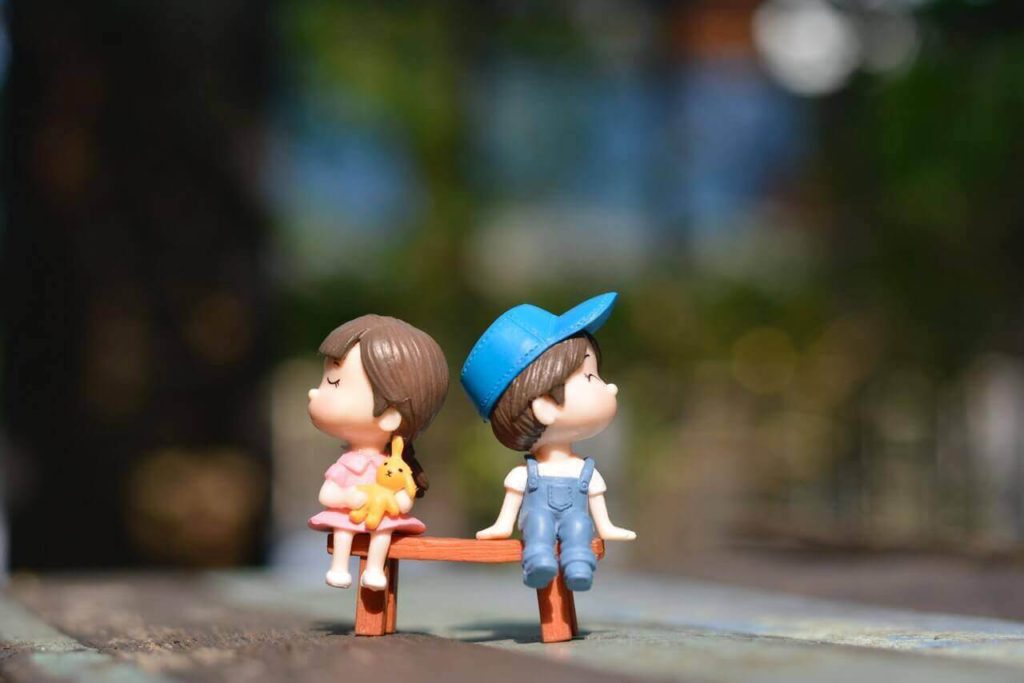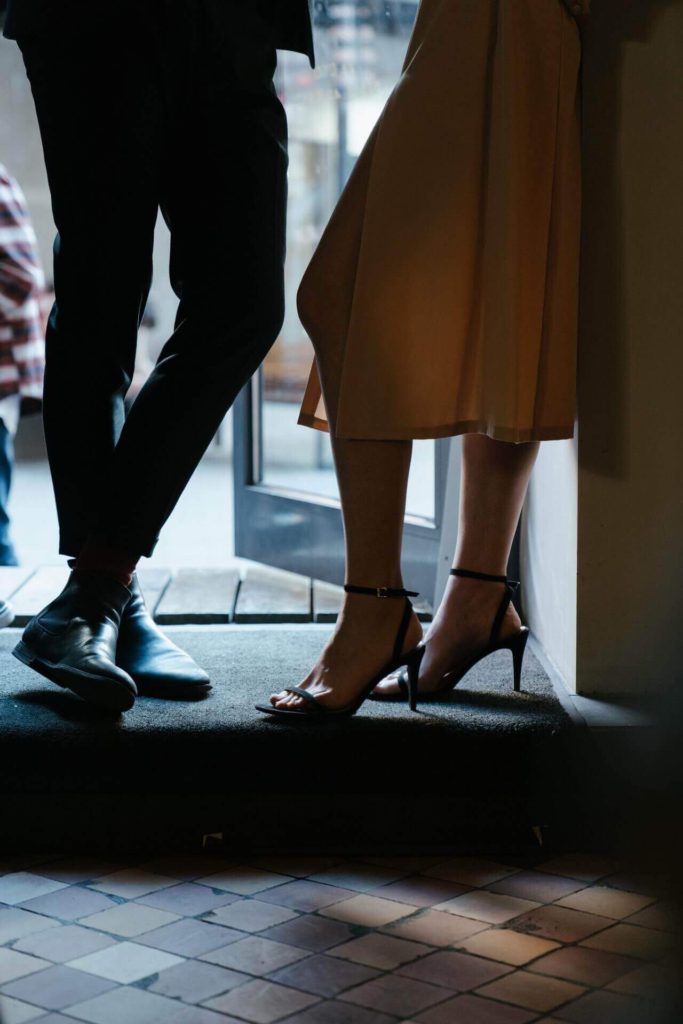A love avoidant type of person will always seem mysterious, elusive like they are never there, and you can’t quite put your finger on it. Dating an avoidant, being in a relationship with a person with this attachment style feels like a disconnected, confusing experience. You sense the person is never there for you, and you keep getting mixed messages that throw you off balance all the time.
However, understanding the love avoidant’s world is the first step towards working on this type of relationship. Although he or she might act like they are not interested and appear emotionally empty, that may not be the case, and this is why today we’re going to explore the love avoidant attachment style.
The love avoidant behaviour
Being in a relationship with a love avoidant person might seem like a struggle because, on your side, you might feel lost, longing for a connection that doesn’t happen all the time.
On your partner’s side, you will see they are happy and OK with the status quo and you’ll have a hard time understanding why, and in the end, you’ll end up blaming him/her. Is there anyone to blame here? We’ll get to that later.
The avoidant behaviour sets in during childhood and might stem from emotionally unavailable parents and different backgrounds of life. Ignoring a child’s needs while growing up might influence the belief that he/she needs to rely only on himself, he can take complete care of himself and doesn’t need other people’s support or help. Of course, there are deeper psychological implications that, unfortunately, we do not have the space to expand on at this stage – perhaps in an upcoming blog.
Back to the avoidant behaviour, the first signs show during childhood when the “little adults” become self-contained, without showing much desire towards closeness or love. When they do, they try to be near those who are objects of their attachment but without interacting much with them.

You can identify a love avoid in adult life from the first signs of not answering texts, or phone calls, to not showing up to dates or even not wanting to speak about marriage, or other serious relationship issues.
Let’s take a close look at the main signs and behaviours of a love avoidant:
- Fear of physical and/or emotional intimacy combined with thick emotional walls that might have resulted from unhappy past experiences. They might open up for brief periods before putting those walls up again.
- Radical changes in behaviour and attitude towards you as you advance in your relationship. Maybe he or she was all sweet, kind, loving, and open at the beginning, but then gradually the walls went up leaving you confused, wondering if that is the end of your relationship. You may end up blaming yourself for what’s happening or blaming your partner, neither of which will have a good ending.
- Emotional distancing. This is where you get the feeling that your partner is no longer part of the relationship. They’re there, but they’re not there. They throw himself into work and hobbies and seem to ignore their partners. If things are not put on the table and if the two of you do not engage in a serious and honest dialogue at this point, then fights can break out.
- The love avoidant types of people are fine with the way things are, refuse to get help, engage in therapy sessions, or talk about the elephant in the room because they don’t sense one. This is one of the most difficult behaviours to deal with.

However, there is also good news. People don’t remain trapped in these defensive love avoidant strategies their whole life. There are ways to get out of it, as a couple or as an individual, but first, you need to understand this condition and…to stop blaming.
The 4 attachment styles
In 1950, psychologists have developed the theory that the way children’s needs are met by their parents influences their attachment style in adulthood. Now, you cannot blame all of your relationships shortcomings throughout life on your attachment style, but it helps to know why some of your relationships might have failed, why you’re attracted to certain people and what is the true nature of your couple issues that you might be going through right now.

According to this theory, there are four attachment strategies adults can adopt in their relationships:
1. The secure attachment style
People who display this kind of attachment are comfortable showing affection, getting close to other people. They know how to draw boundaries in their lives, how to balance being alone with being with their partner. These people are usually the most successful at long-lasting, happy relationships, friendships, and keeping family ties together. They can also deal with rejection and move on quite easily. Data shows that over 50% of the population is part of the secure attachment style.

2. The anxious attachment style
The anxious attachment types need continuous signs of affection from their partner and friends. They do not really like being single, they don’t know how to be alone. They might display a few trust issues, and jealousy.
3. The avoidant attachment style
Independent, self-contained, not good with intimacy, afraid of commitments, or adopting different tactics of getting out of a “serious emotional situation” – these are the love avoidant types.
They might say they feel suffocated and ask for space all the time. They will always find distractions, throw themselves into work, or hobbies to avoid any kind of “serious relationship talk”.
4. The anxious-avoidant attachment style
Unfortunately, this type is a combination of the anxious and avoidant types, bringing together the worst of both worlds.
Fortunately, a person is never 100% one single type of attachment style. Psychological profiling might reveal that one is 70% the secure type, 20% the anxious type, and 10% the avoidant. These values do not stay the same throughout the years, because we can change.
How do you love a love avoidant person?
Is a love avoidant person hard to love? If you can understand how one loves, and engage in an open dialogue about your fears and desires, then the sky is the limit. Usually, secure types can date both anxious and avoidant types, because they can counterbalance their partner’s issues, giving the anxious all the assurance needed and enabling the avoidant type to find someplace for himself.
Anxious and love avoidant types can also go on well in a relationship by reducing one’s shortcomings with the others’. The avoidant type can put people off, can push their partners away, but if that partner is a predominantly anxious-type, he or she will stick around putting that extra energy that might be just enough to convince the love avoidant to open up.
However, these kinds of relationships can get out of hand. The avoidant type will have the confidence that his/her partner will always wait around for him/her and always call 30 times a day without giving up, so he/she can see about his/her independent hobbies and work with no impediment. This creates a deep issue, a sort of chase-relationship where either part will end up exhausted and lost.

Nevertheless, there is hope and it lies in dialogue. Through a dual-way dialogue, the avoidant types can learn to open up, and share their feelings more, see that there is something special, truly great in the person in front of them. If they are in a relationship with a stable type, then they’ve got all the more chances of turning their lives around towards affection, intimacy, and attachment.
Everybody needs to feel loved and appreciated; it’s just that sometimes we’ve had our walls up so high, for so long, we’ve forgotten about the art of appreciation and what it truly means.
Do not be afraid to ask for help, or bring your love avoidant partner into a discussion! In most cases, this was the first step to a happy relationship for many through couples’ therapy!


